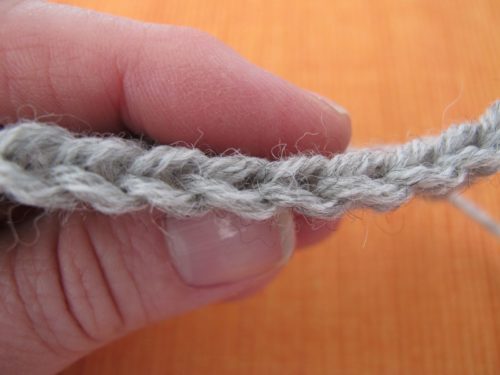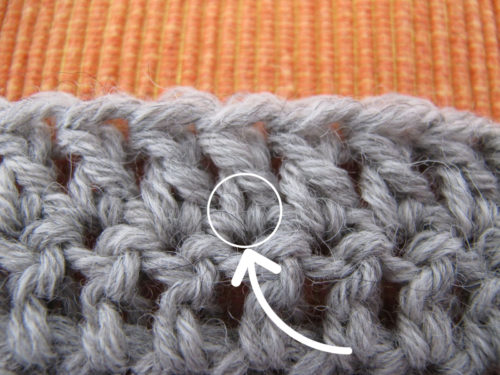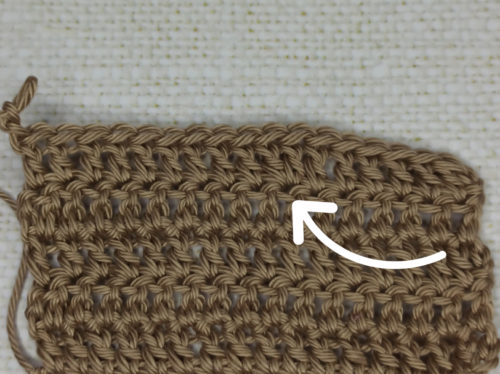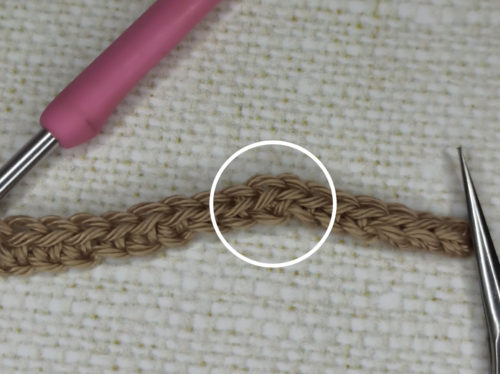Some time ago I discussed 4 strategies against mistakes in crochet and knitting. In my opinion the most important strategy is learning to “read” your work. In this article I would like to develop this a bit further when it comes to crochet.
My first advice is to stop frequently to admire what you just made – and at the same time, to check that everything looks OK.
I’d like to provide a few ideas to help you on the way to finding your mistakes.
Sometimes, the consistency of a stitch pattern is a good indicator of whether it has been well executed. In the stitch pattern shown here, with clusters of dc2tog, I can quickly see (if I look for it!) that I have made a mistake. The single dc at the arrow should have been a dc2tog.

In other situations, a mistake may be less apparent. I have a couple of ideas on this, too.
1) Look at the top of your row.
Turn the work towards you and look at the top of the row.

Are you seeing lots of V’s on their side (the tops of your stitches) following each other in a regular manner like they do here? Or is there a stitch somewhere that looks very different from the others? In the second case, you know where to look more closely at what you’ve done.
To look at the top of the row is also the best way to count your stitches accurately.
2) Look at your feet.
Well, not your own feet, but the feet of your stitches.
The foot of a stitch is found at its very base and looks like a V standing up.

When you can identify the foot of a stitch, you can more easily check that it’s in the right place – and also that you haven’t by mistake made, for example, two stitches in one (instead of one)…

… or skipped a stitch.

There are situations when it’s a bit harder to see what’s happening. This can be the case when you are working a row of sc in a starting chain.
When you look back at your row (do this before finishing it if it’s very long!), two signs can indicate a mistake:
The bump:

Looking more closely, you will see that there is not only one but two feet in the same chain stitch. You have inadvertently worked twice in the same stitch.
The dip:

The opposite of a bump – it’s the base chain folding up a little because you have skipped a stitch.
Knowing how to “read” your work in crochet is a skill that you acquire over time by observing your mistakes over and over again. Don’t give up if you don’t succeed immediately – little by little it will get easier.
To have a clearer view of your stitches and where they’re supposed to go, this article might also be helpful: https://englishblog.annettepetavy.com/2020/03/25/where-do-i-insert-my-hook-tutorial-march-2020/

